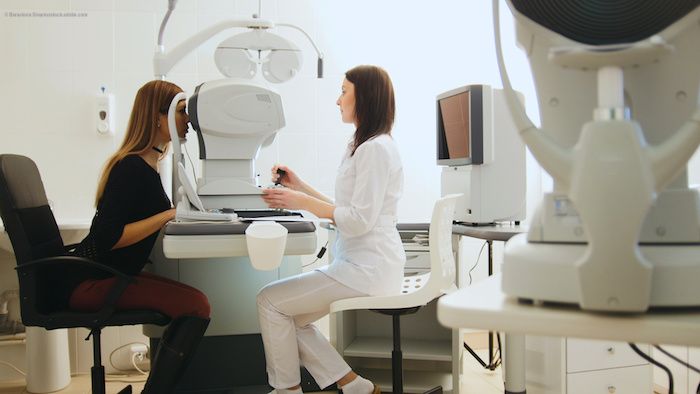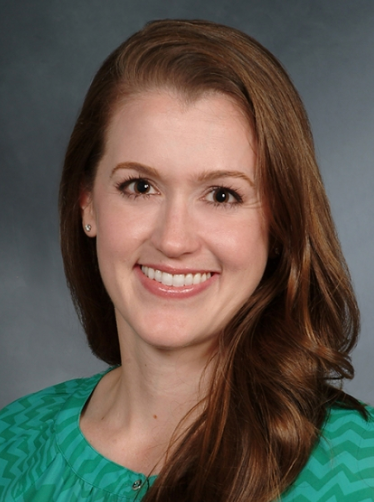Article
Perspective: New data support first-line use of SLT for glaucoma
Author(s):
Selective laser trabeculoplasty (SLT) should be offered to patients diagnosed with open-angle glaucoma as a first-line therapy.

Editor’s Note: Welcome to “Let's Chat,” a blog series featuring contributions from members of the ophthalmic community. These blogs are an opportunity for ophthalmic bloggers to engage with readers with about a topic that is top of mind, whether it is practice management, experiences with patients, the industry, medicine in general, or healthcare reform. The series continues with this blog by Nathan Radcliffe, MD and Sarah H. Van Tassel, MD. The views expressed in these blogs are those of their respective contributors and do not represent the views of Ophthalmology Times or MultiMedia Healthcare, LLC.
The recent publication of findings from the LiGHT study1,2 helped to confirm what many of us who treat glaucoma already suspected: selective laser trabeculoplasty (SLT) should be offered to patients diagnosed with open-angle glaucoma as a first-line therapy.
Study data and interpretation
LiGHT was a prospective, randomized, multicenter, observer-masked trial that enrolled treatment-naïve patients with open-angle glaucoma or ocular hypertension for treatment with either SLT or eye drops. The primary objective of the study was to assess quality of life outcomes after 36 months, with secondary objectives including cost and cost-effectiveness, clinical effectiveness, and safety.
While there was no statistically significant difference in quality-of-life outcomes between the two groups, it is also evident that the best and most robust way to acquire this kind of data has not yet been identified.
Intuitively, it would stand to reason that quality of life is better in patients who are not on drops if they are not subjected to dry eye, redness, the burden of remembering to instill drops (potentially multiple times a day), and to stress and anxiety when drops are missed.
Overall, 95% and 93.1% of eyes in the SLT and eye drop groups, respectively, achieved their target pressure at 36 months, and 74.2% of eyes of patients in the SLT group were drop-free at that time point. As the authors noted, getting patients off drops for at least 3 years may be between 25% and 33% of remaining life expectancy for patients with open-angle glaucoma, reflecting a more substantial benefit than may be evident from a strict reading of the data.
RELATED: (VIDEO) SLT is a cost-effective, first-line glaucoma approach
Consistent with prior studies, it is also interesting that fewer patients in the SLT group required cataract surgery throughout the study compared to the eye drop group. It may be that drop therapy exacerbated inflammatory or other processes that accelerated cataract development. While correlation does not prove causation, the finding reaffirms that drop therapy is not completely benign.
The LiGHT data also suggested that laser was more effective in controlling glaucoma, as eyes of patients in the SLT group were within target IOP at more visits (93%) than in the eye drop group (91.3%).
Additionally, zero patients in the SLT group and 11 patients in the eye drop group required glaucoma surgery, and more eyes in the eye drop group (n = 36) compared with the SLT group (n = 23) exhibited disease deterioration, which was defined as progression of glaucoma or conversion from ocular hypertension to glaucoma.
These findings leave open the possibility that SLT may be a disease modifying treatment. Although not entirely proven, there is some suggestion that persistent but controlled flow of aqueous through the trabecular meshwork helps maintain outflow capacity-much like a muscle that needs to be exercised to maintain viability.
In this way, aqueous suppressants (and even prostaglandin analogues to a certain extent) may not be beneficial to the health of the trabecular meshwork, whereas SLT may offer an advantage in keeping the physiologic outflow system functioning for as well as it can for the long term.
RELATED: Novel DSLT Taking Aim At Greater Access To Glaucoma Care
SLT in practice
SLT is not new to the glaucoma space. It was invented by Mark Latina, MD in the mid-1990s and brought to market by Lumenis shortly after. Lumenis technology, which was used in the LiGHT study, is what we use for our SLTs, and Lumenis continues to be a leader and innovator in this space.
SLT has emerged as a simpler, less confusing, and more efficient option for patients than medical therapy with comparable, if not better, clinical outcomes. As noted in LiGHT, SLT is likely more cost effective than eye drops.
We add to this an additional perspective-from a financial standpoint, prescribing drops entails expense for the practice (primarily in the form of resource allocation for pharmacy and patient call backs) whereas SLT can be a revenue-generating portion of the practice. In the near future, sustained-release therapies may become available as attractive non-drop options.
Patient acceptance is definitely the biggest barrier to wider use of SLT as first-line therapy. Each of us offers SLT as initial therapy for patients newly diagnosed with mild to moderate glaucoma, but we are careful to leave the final decision to the patient. Understandably, undergoing a procedure, even one as safe as SLT, can induce anxiety in some individuals.
RELATED: The role of IPL in OSD treatment
At the least, mentioning the possibility of laser at the onset plants an idea that can be revisited if medical therapy proves unsuccessful, intolerable, or too inconvenient.
Related to this, we avoid focusing too much on the potential side effects of drops when discussing treatment options, which might raise doubts in patients’ minds if they choose to go that route and encourage suboptimal compliance.
Overall, it is encouraging that the majority of patients in each group achieved their target pressure with low rates of progression.
However, as one digs deeper into the LiGHT study, a lot of the more subtle findings help highlight the benefits of using SLT as first-line therapy for patients, physicians, and payers.
RELATED: MIGS Developments Continuing To Transform Glaucoma Surgery
Disclosures:

Nathan Radcliffe, MDDr. Radcliffe is a consultant for Lumenis, Ellex, Iridex, and Beaver Visitec International.

Sarah H. Tassel, MDDr. Van Tassel has no financial disclosures.
References:
1. Gazzard G, Konstantakopoulou E, Garway-Heath D, et al; LiGHT Trial Study Group. Selective laser trabeculoplasty versus eye drops for first-line treatment of ocular hypertension and glaucoma (LiGHT): a multicentre randomised controlled trial. Lancet. 2019;393:1505-1516.
2. Garg A, Vickerstaff V, Nathwani N, et al; LiGHT Trial Study Group. Primary Selective Laser Trabeculoplasty for Open Angle Glaucoma and Ocular Hypertension: Clinical Outcomes, Predictors of Success and Safety from the Laser in Glaucoma and Ocular Hypertension (LiGHT) Trial. Ophthalmology. Published online April 24, 2019.
3. L tina MA, Park C. Selective targeting of trabecular meshwork cells: in vitro studies of pulsed and CW laser interactions. Exp Eye Res. 1995;60:359-371.
Newsletter
Don’t miss out—get Ophthalmology Times updates on the latest clinical advancements and expert interviews, straight to your inbox.




